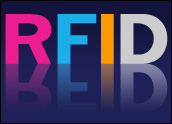
Over the last several weeks,Kimberly-Clark (NYSE: KMB) has shipped approximately 100,000 cases of Huggies brand diapers and similar products toWal-Mart (NYSE: WMT) using Gen2 RFID (radio frequency identification) tags — the initial step in a full deployment to all customers using this technology, the company said.
Gen2 is the newest RFID protocol available. So far, retailers that have adopted it are pleased with its improvements.
“The quality of the tags has improved in Gen2,” Mike O’Shea, director of Kimberly-Clark’s Auto-ID Sensing Technologies group, told CRM Buyer.
Also, they are much cheaper than earlier versions, he adds, and are able to work on broader frequencies.
Another point in Gen2’s favor is its global reach. The earlier standard was developed for the North American market. Gen2, by contrast, “is a platform we can use in other parts of the world,” O’Shea said.
The Wal-Mart Factor
Thanks to its enormous purchasing power, Wal-Mart has been the driver behind most retailers’ and suppliers’ adoption of RFID technology. Initially, many did so reluctantly, especially given the uncertainty and expense of the earlier technology.
By contrast, there is cautious optimism about Gen2 performance and the likelihood of its eventual wide adoption, for many of the reasons O’Shea cited.
“The first round of RFID applications and their rollout were hindered by the cost,” Darin Yug, a partner with management consultancy DiamondCluster, told CRM Buyer.
“It is promising to hear that companies like Kimberly-Clark are adopting Gen2.”
Initial Benefits
The immediate benefit for companies deploying Gen2 tags is relatively lower cost, compared to the earlier technology. Gen2 tags, O’Shea pointed out, represent a significant savings.
The longer-term benefits, however, remain unclear — largely because the industry has not yet been able to fully leverage the data yielded from RFID technology.
Also, other retailers and suppliers will have to embrace this technology, O’Shea said, for it to deliver a true return on investment to the industry and to individual firms.
“This will be a several-years-long process,” he predicted. “We have to work with application providers, and work to re-engineer our business processes.”
Until those milestones are hit, he said, all K-C did, essentially, was move from one platform to another with its shift to Gen2.
Adoption Curve
While Gen2 technology is promising there are still challenges to wider adoption, Yug observed. He agrees with O’Shea that the industry must reach a critical mass, especially on the retail side.
Consumer goods producers will have to continue to maintain their investments as that happens.
Also, Yug added, the move to Gen2 raises the issue of whether firms that adopted earlier technology will be willing to make the shift.
“The question is how far down the track have they gone with Gen1, and are they flexible enough to migrate?” he said.





















































